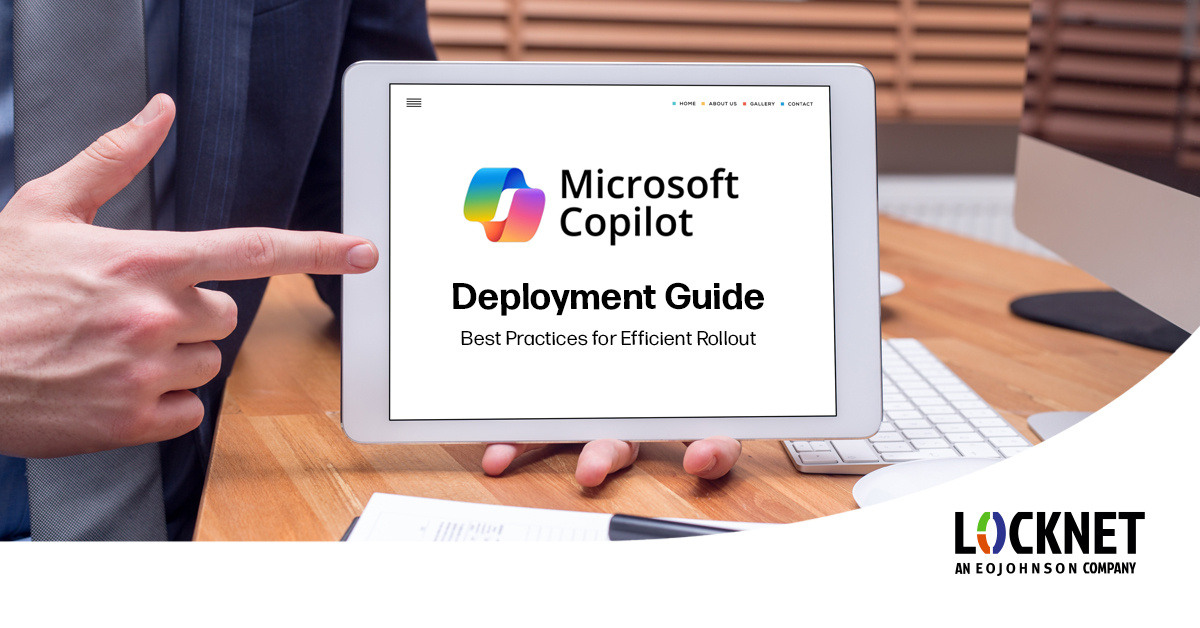World Class IT Support & Service
Real People. Right Now.
About Locknet® IT Services
From the first hello, the Locknet® team is dedicated to serving you and your needs.
Real People. Right Now.
From the first hello, the Locknet® team is dedicated to serving you and your needs.


Welcome to the Microsoft Copilot Deployment Guide. In this guide, we will explore the best practices for efficiently rolling out Microsoft Copilot within your organization. Covering both the technical requirements and best practices for adoption, this comprehensive Microsoft Copilot deployment guide will provide you with the necessary steps to integrate Copilot seamlessly into your workflows.
Before integrating Microsoft Copilot, you need to ensure your infrastructure can support it. Here’s a brief overview of the key technical prerequisites:
For businesses who are already clients of Locknet Managed IT, we can review all the technical requirements with you and help you determine if your organization is a good fit for integrating this technology.
A successful Copilot rollout requires a comprehensive strategy that focuses on training, phased implementation, and security. Below is a step-by-step approach to ensure a smooth Microsoft Copilot adoption across your organization:
Start with a small pilot group of employees from different departments and have them review practical Microsoft Copilot use cases. This group will help you understand how Copilot integrates with various workflows and can provide early feedback on its functionality. The pilot program will allow you to resolve any technical or operational issues before a full-scale rollout.
Copilot’s AI capabilities are powerful but can also be overwhelming for users unfamiliar with AI tools. Conduct training sessions to help employees understand how to interact with Copilot effectively. Focus on practical examples, such as automating repetitive tasks in Excel or generating first drafts of documents in Word. To support these efforts, Microsoft provides a whole host of online video resources to enhance your user education
Since Copilot interacts with company data, it’s critical to review security and compliance settings. Ensure that sensitive data is protected and set up user permissions based on roles. Regularly audit these settings as part of your cybersecurity protocols to prevent data breaches or unauthorized access.
Expand the pilot program into a phased rollout across the organization, focusing on one department or team at a time. This allows the IT department to manage any technical issues that arise and gives employees a chance to adjust to Copilot’s features without feeling overwhelmed.
Once Copilot is fully implemented, it’s essential to monitor its use and performance. Gather feedback from employees on how Copilot has impacted their workflows and look for areas to optimize further. Continuous improvement will ensure that your organization maximizes the potential of AI-powered productivity.
Getting started with Microsoft Copilot can significantly enhance productivity across your organization, but it requires planning and a strategic approach. By ensuring that your technical infrastructure is ready, conducting a pilot program, and providing thorough training, businesses can seamlessly integrate Copilot into their workflows and drive better outcomes through AI-assisted capabilities.
We hope this Microsoft Copilot Deployment Guide has made it a little easier for you to think about how you can start incorporating this AI technology into your own organization. As your Managed IT provider, we’re also here to help by reviewing your organization’s technical requirements and sharing our best practices for adoption. Contact us today to get started!
Microsoft

Onalaska, WI Waterloo, IA Wausau, WI Eau Claire, WI Burnsville, MN
You are now leaving locknetmanagedit.com. Please check the privacy policy of the site you are visiting.